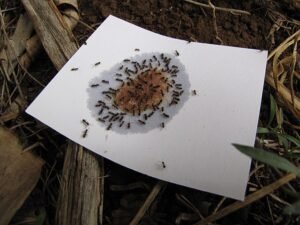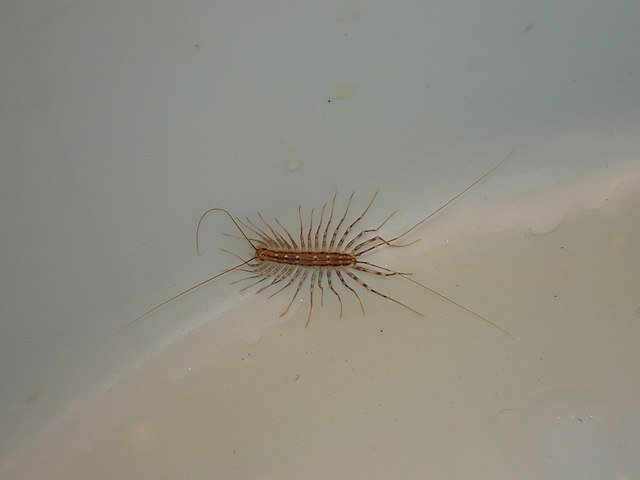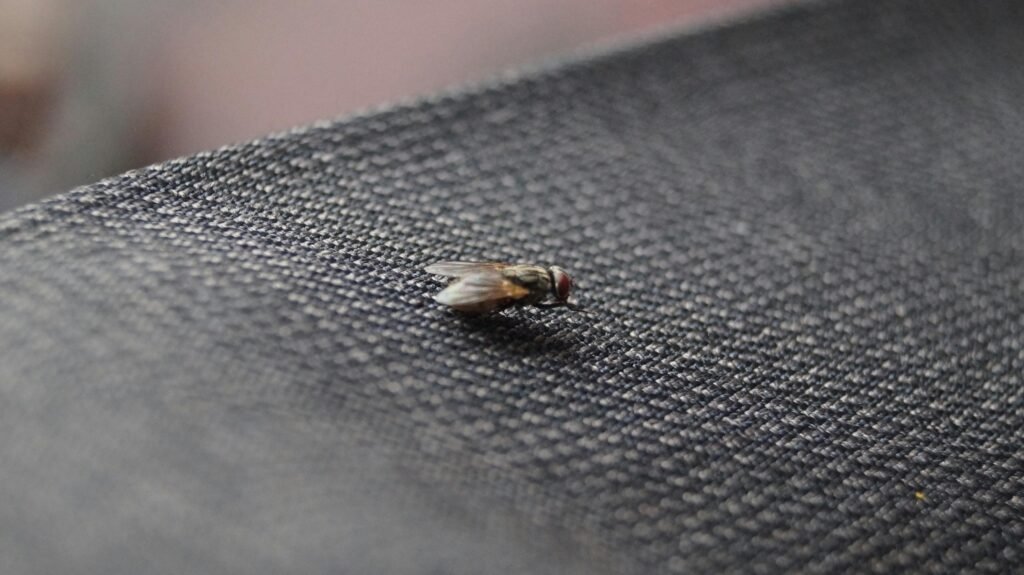Odorous House Ants (Tapinoma sessile): Identification, Risks, and Control Strategies
 Among the wide range of household ants that frustrate homeowners, the Odorous house ant (Tapinoma sessile) stands out for two reasons: its persistence and its smell. When crushed, this small but hardy ant releases a rotten, coconut-like odor—an unmistakable trademark that gives the species its name.
Among the wide range of household ants that frustrate homeowners, the Odorous house ant (Tapinoma sessile) stands out for two reasons: its persistence and its smell. When crushed, this small but hardy ant releases a rotten, coconut-like odor—an unmistakable trademark that gives the species its name.
While they may not sting like fire ants (Solenopsis invicta) or damage wood like carpenter ants (Camponotus spp.), odorous house ants cause their own set of problems. They invade kitchens, pantries, and bathrooms in large trails, contaminating food and becoming extremely difficult to eliminate.
This article explores everything you need to know about odorous house ants: how to identify them, their biology, where they are found, the risks they pose, and the most effective methods for control.
Identification
Correct identification is crucial when dealing with ants. Misidentifying odorous house ants as pavement ants (Tetramorium immigrans) or acrobat ants (Crematogaster spp.) can lead to wasted effort and poor results.
Scientific name: Tapinoma sessile
Size: Workers measure 2.4–3.3 mm in length.
Color: Brown to black, with a shiny body.
Shape: Uneven thorax when viewed from the side, no visible spine.
Odor: Distinct rotten coconut-like smell when crushed.
Antennae: 12 segments, no club.
Nest style: Can nest outdoors under rocks, mulch, logs, or indoors in wall voids, insulation, and potted plants.
Unlike ghost ants (Tapinoma melanocephalum), which have pale abdomens, odorous house ants have a uniform dark coloration. Their colonies can range from a few hundred to thousands, with multiple queens.
Biology and Ecology
Odorous house ants are highly adaptable, able to thrive in urban, suburban, and rural environments.
Diet: They feed on honeydew secreted by aphids and scale insects outdoors. Indoors, they prefer sweets but will consume proteins and greasy foods.
Behavior: They form long trails, often along structural edges, that lead to food sources.
Reproduction: Colonies are polygynous (multiple queens) and polydomous (multiple nesting sites). This makes elimination especially challenging, as new colonies can easily bud from one.
Seasonal Activity: Colonies expand rapidly in spring and summer when honeydew and nectar are abundant. During cooler months, they invade homes seeking warmth and food.
These ants are opportunistic. Their ability to split colonies and relocate quickly explains why infestations persist even after partial treatments.
Global Distribution
Although Tapinoma sessile is native to North America, it has adapted extremely well to human-modified environments.
North America: Found across the United States and southern Canada, from forests to cities.
Urban areas: Highly successful in metropolitan settings where access to food and water is constant.
Comparison: Just like so many other insects that thrive in cities, odorous house ants are urban exploiters, taking advantage of human environments.
Because they tolerate a wide range of temperatures and nesting sites, they are often called “tramp ants”—species that hitchhike and spread widely in association with humans.
Risks and Damage
While odorous house ants do not cause structural damage like termites, their presence brings significant problems:
Food contamination: Colonies forage aggressively inside pantries, contaminating sugar, cereal, and other stored goods.
Difficult elimination: Polygynous colonies make complete eradication hard; killing one queen is rarely enough.
Secondary pests: By tending aphids for honeydew, they indirectly encourage garden pests that damage plants.
Reputation risk: For restaurants, hotels, and food-processing sites, an ant infestation can damage customer trust.
Unlike fruit flies (Drosophila spp.) that indicate sanitation problems, odorous house ants signal deeper pest pressure that requires structural and ecological fixes.
Signs of Infestation
Recognizing the early signs can help prevent a full-blown problem:
Long, steady trails of ants moving to and from food sources.
Strong, unpleasant odor when ants are crushed.
Multiple nest sites indoors and outdoors.
Activity in warm, moist areas such as bathrooms, kitchens, and water heaters.
Because they do not build large mounds like fire ants, infestations can go unnoticed until ant numbers spike.
Control Methods
Effective odorous house ant control requires patience and precision.
1. Sanitation
Wipe spills and crumbs immediately.
Seal food in airtight containers.
Reduce grease build-up in kitchens.
2. Exclusion
Seal cracks and entry points around windows, doors, and foundations.
Fix leaky pipes and faucets, since ants are strongly drawn to moisture.
3. Baits
Gel or granular ant baits work best when placed along foraging trails.
Protein-based baits in spring, sweet baits in summer and fall.
Avoid spraying repellent insecticides directly on trails, as this only scatters colonies.
4. Professional help
Licensed pest control professionals can assess colony spread, apply targeted baits, and ensure safety compliance.
Advanced Approaches
For severe infestations, standard control may not be enough.
Integrated Pest Management (IPM): Combines monitoring, sanitation, exclusion, and precise bait placement.
Non-repellent insecticides: Used by professionals to allow ants to spread treated food throughout the colony.
Moisture management: Long-term success often requires fixing structural leaks and improving drainage.
Colony relocation studies: Research shows odorous house ants shift nests quickly when threatened. Control strategies should anticipate this behavior.
By addressing the root environmental factors, control becomes sustainable, not just temporary.
Cultural and Historical Context
Humans have long noticed the peculiar smell of odorous house ants. Early entomologists in the 19th century recorded their “coconut-like” odor. In the modern era, they serve as a model for studying tramp ant behavior and colony organization.
Their resilience parallels urban wildlife such as rats (Rattus spp.) and pigeons—organisms that succeed by adapting to human settlements.
FAQ Section
Q1. Why do odorous house ants smell like rotten coconut?
The odor comes from chemicals in their defensive secretions, unique to Tapinoma sessile.
Q2. Are odorous house ants dangerous to humans?
They don’t bite or sting but contaminate food and are a nuisance indoors.
Q3. What’s the difference between odorous house ants and pavement ants?
Pavement ants (Tetramorium immigrans) have visible spines on their thorax and nest under sidewalks. Odorous house ants lack spines and smell when crushed.
Q4. Do odorous house ants damage wood?
No. Unlike carpenter ants, they don’t excavate wood but may nest in voids near moisture-damaged areas.
Q5. How long does it take to get rid of odorous house ants?
Depending on colony size, control may take weeks. Multiple bait applications and environmental fixes are usually required.
Q6. Do odorous house ants disappear in winter?
They reduce outdoor activity but often move indoors, where warmth and food are available.
Final Thoughts
Odorous house ants (Tapinoma sessile) may be small, but their resilience and adaptability make them a serious challenge for homeowners and businesses alike. Unlike occasional nuisance ants, these colonies expand rapidly, splitting into multiple nests and thriving indoors when outdoor conditions become unfavorable.
Effective control requires more than simply killing visible workers. It demands a strategy that includes sanitation, sealing entry points, moisture reduction, and above all, baiting that reaches queens and satellite nests. For large-scale infestations, professional intervention is strongly advised.
Just as pigeons (Columba livia) have become emblematic of urban wildlife, odorous house ants symbolize the hidden struggles of city living: pests that exploit our resources, challenge our patience, and require smart, science-based solutions to manage.
Disclaimer
This article is for informational purposes only. Pest control laws and approved chemicals vary by country. For best results and legal safety, we strongly recommend contacting a licensed pest control professional in your local area. Always make sure that the pest control technician is properly certified or licensed, depending on your country’s regulations. It’s important to confirm that they only use approved products and apply them exactly as instructed on the product label. In most places in Europe, UK, or USA, following label directions is not just best practice—it’s the law.
Author Bio
Nasos Iliopoulos
MSc Agronomist & Certified Pest Control Expert
Scientific Director – Advance Services (Athens, Greece)
Licensed Pest Control Business – Ministry of Rural Development & Food (GR)
References
Wikipedia - Tapinoma sessile
Penn University . Odorous house ants
- Forest & Kim Starr. Musa sp. (Banana) habitat with Tapinoma sessile at bait card, Waipoli Rd, Kula, Maui (2010). Flickr – Starr Environmental. Licensed under CC BY 3.0 US.


